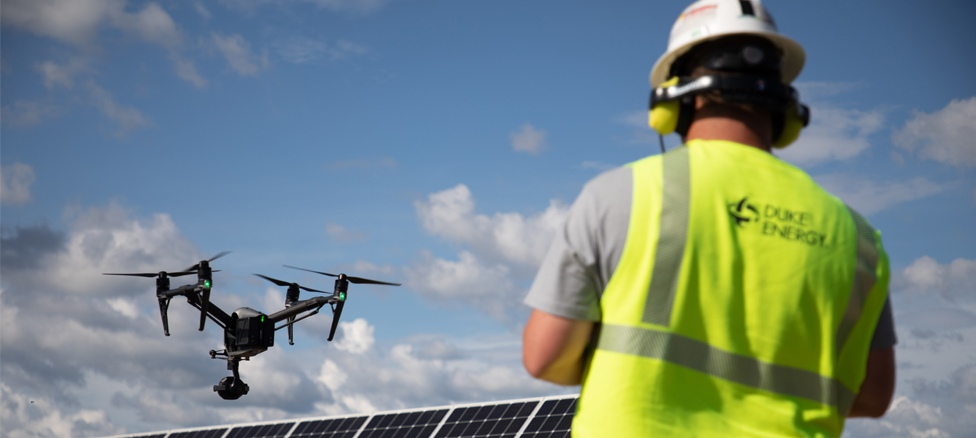Drones Take Flight at Duke Energy
Drones Take Flight at Duke Energy

Each year, on August 19, National Aviation Day recognizes Orville and Wilbur Wright, the pioneering brothers of aviation who invented the first functional airplane in 1903. Today, many EEI member companies are using another innovative aircraft– drones, also known as unmanned aerial systems (UAS) – to inspect equipment, plan new construction sites, assess damage after storms, and more.
Duke Energy, for example, has a drone team that grew from two employees in 2015 to more than 40 now. The company recognizes that drones help keep employees safe and allow them to perform work that was previously impossible.
“It's certainly an exciting time at Duke Energy where aviation is able to help meet our goals for keeping our customers lights on and reducing our carbon footprint,” said Jackson Rollins, who manages Duke Energy’s UAS team.
At Duke Energy, drones:
- Help the company inspect equipment quickly and efficiently. Duke Energy has more than 10,000 megawatts of renewables – enough to power 2.4 million homes and businesses – and plans to have 16,000 megawatts by 2025, which means it is building more solar facilities. Before drones, technicians would use a handheld thermal imaging device to test each section of a solar field, which can span hundreds of acres. By inspecting thousands of panels in minutes, drones help to solve problems faster, resulting in more clean energy generated.
- Help with mapping and modeling during construction of power plants and solar and wind facilities. The UAS team flies drones a few hundred feet over new sites from Florida to the Carolinas, the Midwest, and the western United States. The photography and data are compiled to create a digital version of the area or components. Project managers can use this information to track progress or to get measurements of equipment or the site.
- Help with power restoration efforts. After hurricanes and other strong storms, Duke Energy deploys drone operators to assess damage. Drones can perform more detailed inspections and access areas helicopters can’t reach for a unique perspective. Drone operators can tell how much vegetation is down after high winds or flooding and can see what power poles, lines, or equipment is damaged. They also can find the best paths to access equipment, which reduces the need for people to walk in hazardous areas and helps crews determine what repairs are needed.
Read this blog post in Duke Energy’s blog, illumination, to learn more about the company’s drone team and to watch a video of the drone team in action.